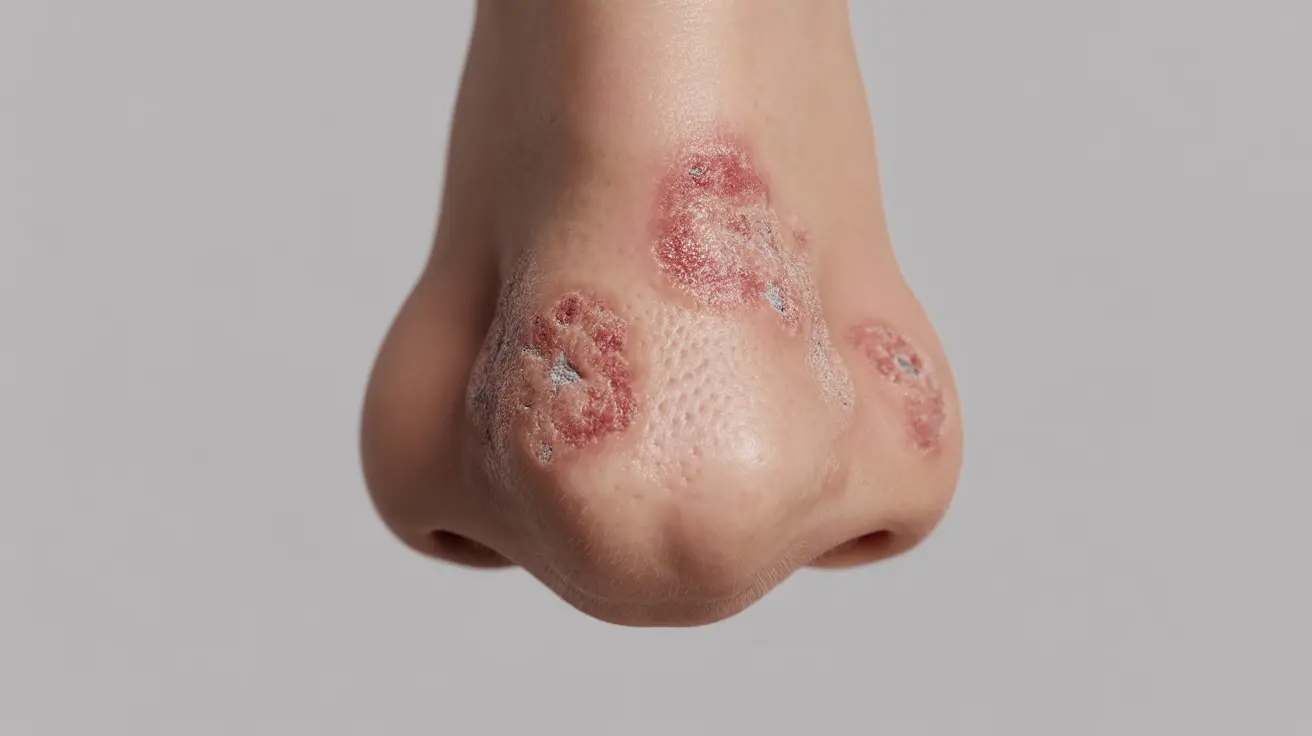Psoriasis affecting the nose area can be particularly challenging to manage due to the sensitivity of nasal skin and its prominent facial location. Understanding the early signs and proper management of nasal psoriasis is crucial for those affected by this condition, as prompt recognition and treatment can help prevent complications and improve quality of life.
While psoriasis commonly appears on areas like elbows, knees, and scalp, its presence around or inside the nose requires special attention due to the delicate nature of nasal tissue and its impact on daily activities like breathing and wearing glasses.
Recognizing Early Signs and Symptoms
The initial manifestations of psoriasis around the nose often present with distinct characteristics that set them apart from other skin conditions:
- Red, inflamed patches of skin around the nose
- Silver or white scales that may appear dry and flaky
- Skin that feels tight or uncomfortable
- Possible irritation where glasses rest on the nose
- Mild itching or burning sensation
Internal Nasal Symptoms
When psoriasis affects the inside of the nose, you might experience:
- Dryness within the nasal passage
- Crusting around the nostrils
- Occasional bleeding when blowing your nose
- Discomfort during breathing
- Increased sensitivity to temperature changes
Diagnostic Process
Healthcare providers typically follow a systematic approach to diagnose nasal psoriasis and differentiate it from similar conditions:
- Visual examination of the affected area
- Review of medical history and family history
- Possible skin biopsy in unclear cases
- Assessment of other potential psoriasis locations on the body
Treatment Approaches
Topical Treatments
The primary treatment options for nasal psoriasis often include:
- Mild corticosteroid creams specifically formulated for facial use
- Calcineurin inhibitors
- Moisturizing ointments
- Vitamin D derivatives
- Specialized nasal sprays for internal symptoms
Systemic Treatments
For severe cases or when topical treatments prove insufficient, healthcare providers might recommend:
- Oral medications to manage inflammation
- Biological treatments for widespread psoriasis
- Light therapy under medical supervision
- Combination therapy approaches
Managing Triggers and Prevention
Identifying and avoiding triggers is essential for preventing flare-ups:
- Protect the nose from extreme weather conditions
- Maintain proper nasal hygiene
- Use gentle, fragrance-free skincare products
- Manage stress levels effectively
- Keep the affected area moisturized
Daily Care Routine
Establishing a consistent care routine can help maintain skin health:
- Gentle cleansing with lukewarm water
- Regular application of prescribed medications
- Use of appropriate moisturizers
- Careful sun protection
- Regular medical check-ups
Frequently Asked Questions
What are the early signs and symptoms of psoriasis around or inside the nose? The earliest signs include red, inflamed patches of skin, silver-white scales, and possible irritation or discomfort. Inside the nose, you might experience dryness, crusting, and occasional bleeding.
How is psoriasis on or near the nose diagnosed and differentiated from other nasal conditions? Diagnosis involves a thorough visual examination by a healthcare provider, review of medical history, and possibly a skin biopsy. The characteristic appearance of psoriatic lesions helps differentiate it from other conditions.
What treatment options are available for managing psoriasis on or inside the nose? Treatment options include topical corticosteroids, calcineurin inhibitors, moisturizing treatments, and in severe cases, systemic medications or biological treatments.
What common triggers can cause or worsen psoriasis symptoms in the nasal area? Common triggers include stress, weather changes, harsh skincare products, trauma to the skin, certain medications, and environmental irritants.
How can I prevent nasal psoriasis flare-ups and care for sensitive skin around my nose? Prevention involves maintaining a gentle skincare routine, avoiding known triggers, using appropriate moisturizers, protecting the skin from environmental factors, and following prescribed treatment plans consistently.




